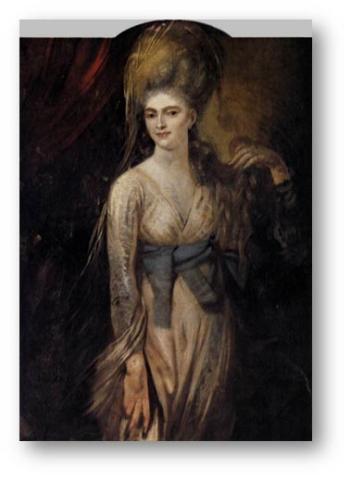Very successful raffles held at each monthly lecture enabled The Arts Society Taunton to distribute 100 bags filled w
The Nightmare
The Nightmare
20 May 2020
The Nightmare
Some paintings stare right through you. Other works dare you to gaze through them. Fuseli’s pre-Freudian psychodrama conceals behind itself, in layers hidden from the eye, as much as it consciously reveals.
The Nightmare was one of the first paintings to depict an idea rather than an event, a story, or a person. Indeed, it may even be a complicated visual pun on the word "nightmare". Thus, the canvas shows a sleeping woman - draped helplessly over the end of her bed - as well as the content of her "nightmare" - namely, an ape-like incubus squatting on top of her. In addition, the image of a horse protruding from the shadows may illustrate a second meaning of the picture's title - "night-mare". Thirdly, the demon may be intended to represent a "mara" - that is, a spirit sent to torment and/or suffocate innocent sleepers. The word "nightmare" derives from "mara" the Old English word for "incubus". [Source: Concise Oxford English Dictionary.] Some art critics believe that the painting was inspired by Germanic legends about demons who possessed people as they slept. In these tales, men were visited by horses or witches, while women were believed on occasion to have sex with the devil.
Fuseli was painting during the height of the so-called "Age of Reason", at a time when many, if not most, people had stopped believing in witches and other darker, irrational forces. And yet he, and several other painters in England, used these supernatural themes in many of their Romantic paintings and drawings. The giveaway is the horse’s bulging, sightless stare. All but popping out of its head as if awestruck by something it has just seen; yet the stallion’s eyes are eerily blank. They provide our first clue that this is not a physical scene to be inspected for forensic details, but a plane on which an intense introspection is being played out – a theatre of the mind.
As with all great works, the scene has become so familiar (The Nightmare was among the most parodied and reproduced images of the Romantic age) that it is easy to look right through it. In a sense, it is a pity we can’t, because on the other side of the canvas the artist has concealed a dusky portrait – an under-consciousness – that may well unlock the dark calculus of his painting. The secretive portrait is dim and sultry and depicts a smirking seductress in a low-cut gown, stroking the feather boa that dangles from her shoulder.
It is thought that the hidden likeness was executed two or three years Before The Nightmare, after Fuseli had returned to his native Zurich following a lengthy exile. After an eight year stint in Italy – during which he taught himself to paint, and distinguished himself among the growing circle if British artists congregating there – Fuseli returned to Switzerland in 1778, where he fell passionately in love with the niece of his friend, the physiognomist Johann Caspar Lavater. So, can we read anything into this portrait?
As an impoverished, though promising, painter Fuseli felt unable to declare his feelings for the sultry Swiss blonde, who now, and forever, turns her back on the world and stares into the wall. Sadly, for lovelorn Fuseli, Anna Landolt was engaged to a gentleman deemed to have better prospects, yet the resemblance between the forgotten portrait and the dishevelled victim with whom she shares a canvas is striking. The two have the same dishwater-blonde hair, the same thick lips, the same build, and bosom. They are, as it were, two sides of the same coin, not only physically but psychologically. The incubus who hunkers on the girl’s stomach has been cited as bearing a resemblance to the artist and, thus, if Fuseli couldn’t win the lady of his dreams, he could claim a conquest in her dream!
Henry Fuseli, The Nightmare. Oil on canvas, 101.6 × 127 cm. Detroit Institute of Arts
About the Author
Jeni Fraser
JOIN OUR MAILING LIST
Become an instant expert!
Find out more about the arts by becoming a Supporter of The Arts Society.
For just £20 a year you will receive invitations to exclusive member events and courses, special offers and concessions, our regular newsletter and our beautiful arts magazine, full of news, views, events and artist profiles.
FIND YOUR NEAREST SOCIETY
MORE FEATURES
Lytham Hall, an exquisite Grade I listed Georgian house designed by John Carr of York, stands as a testament to 18th-






